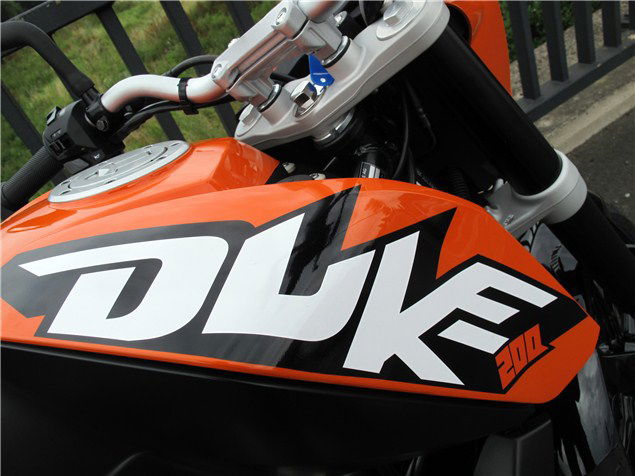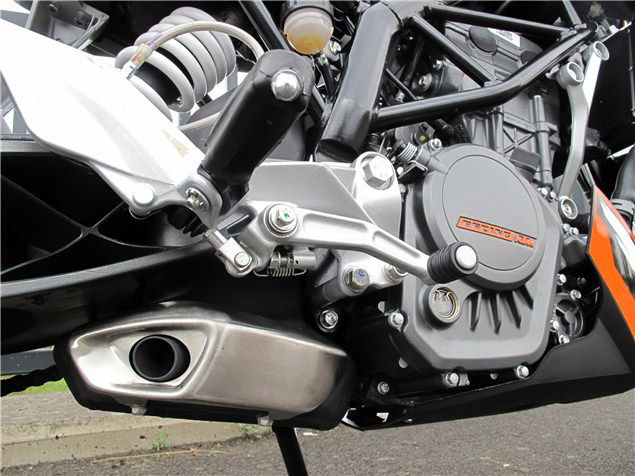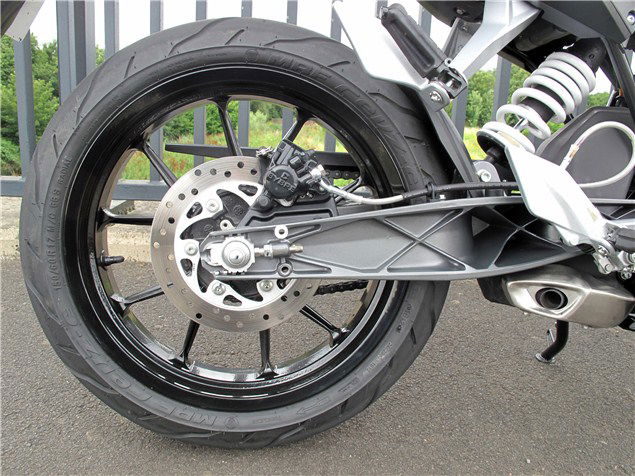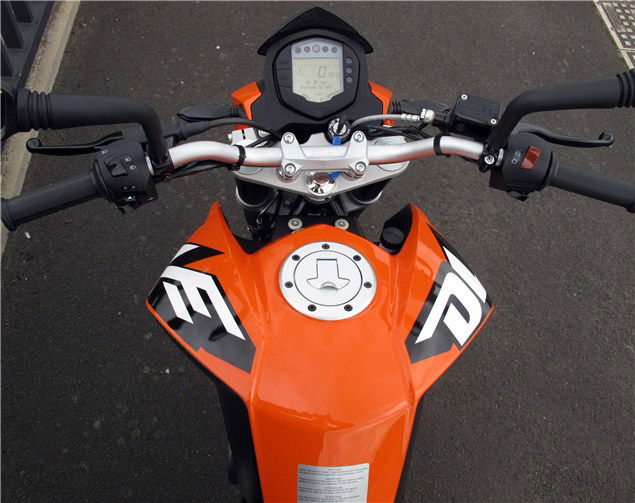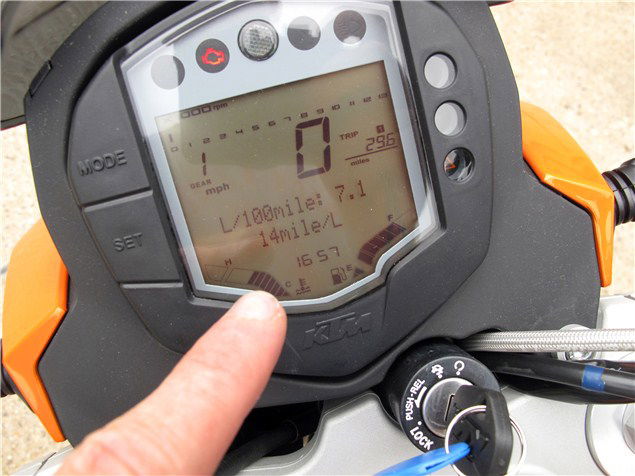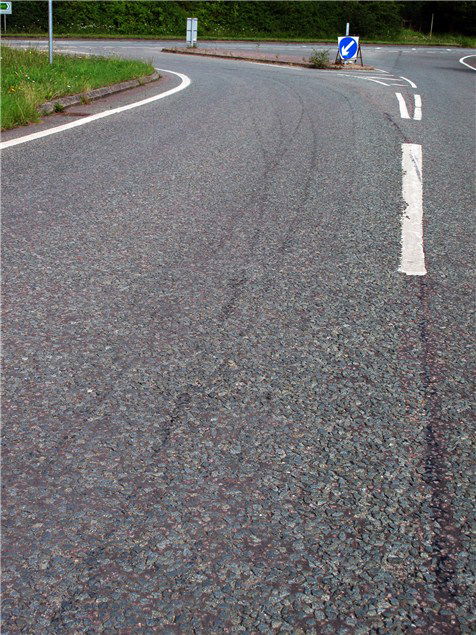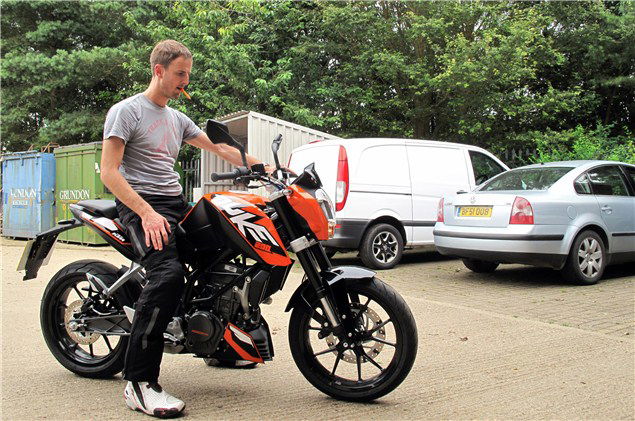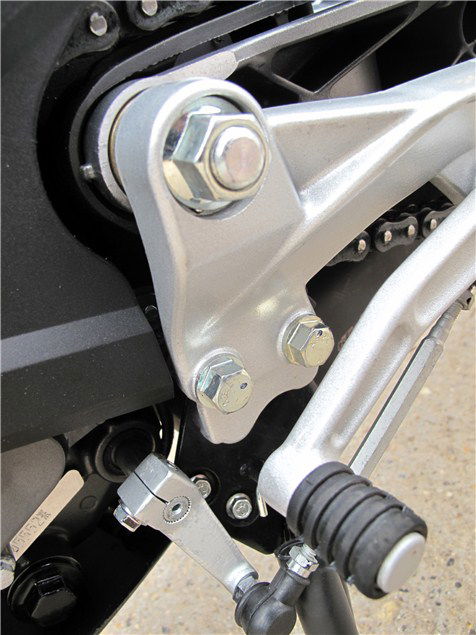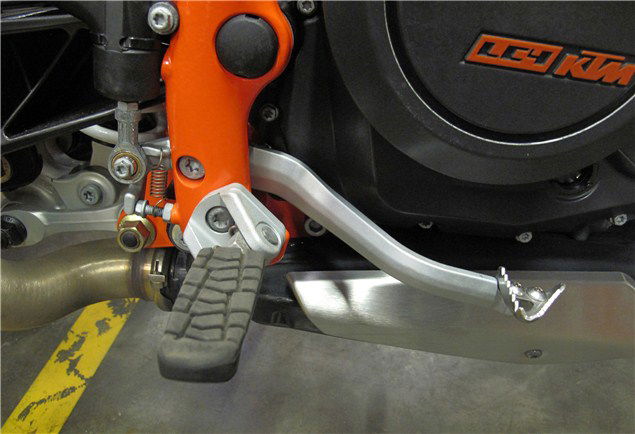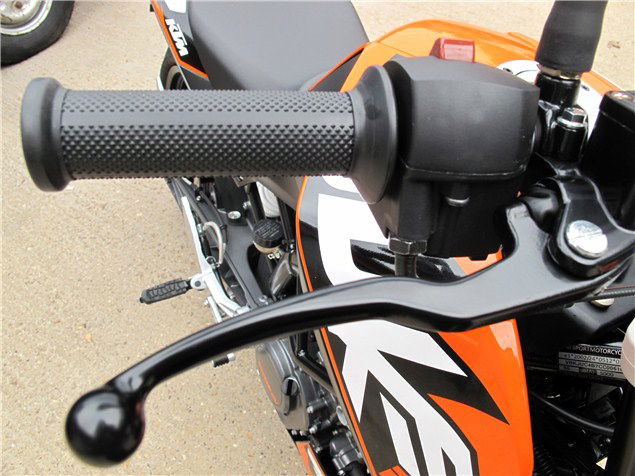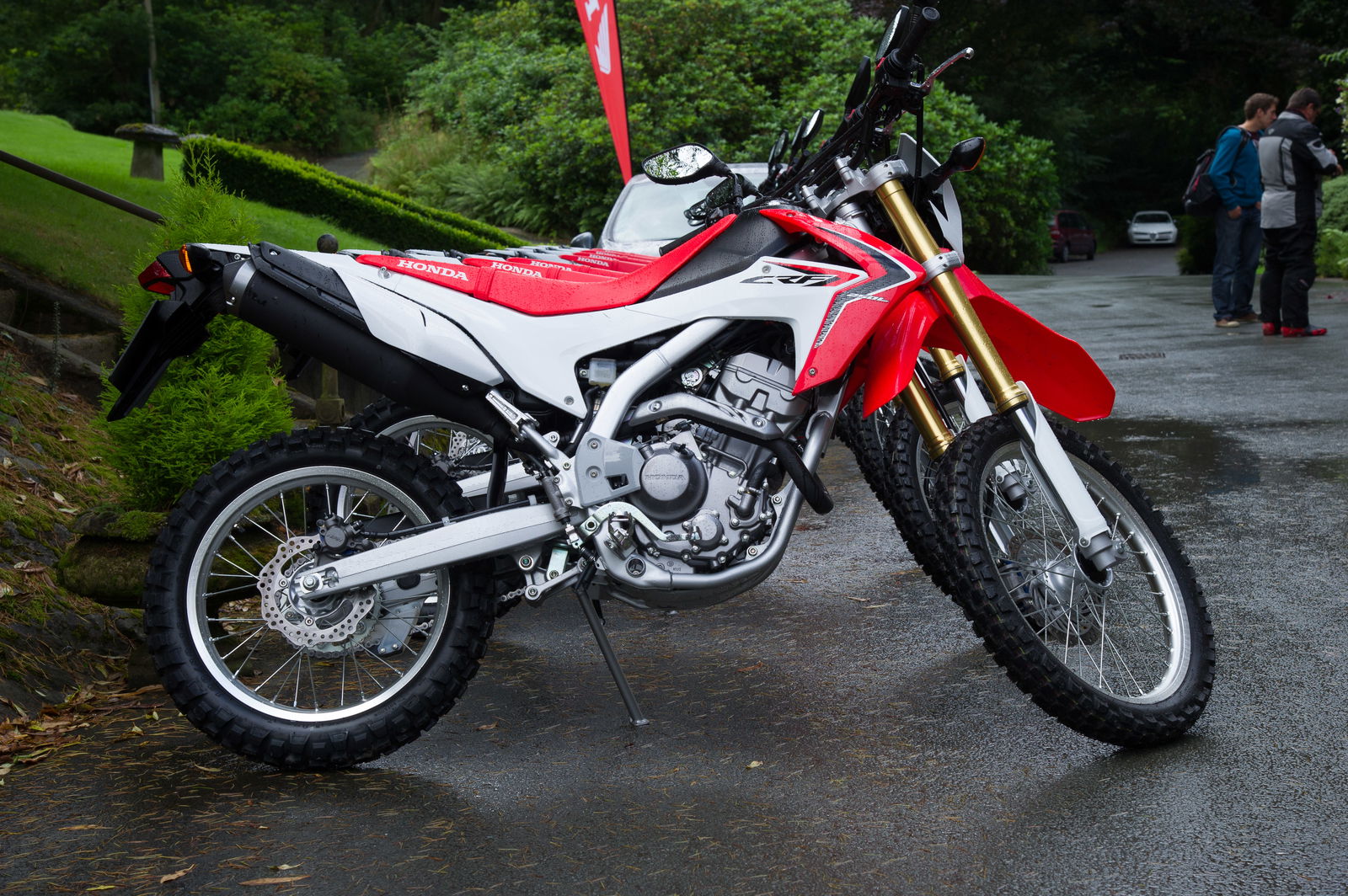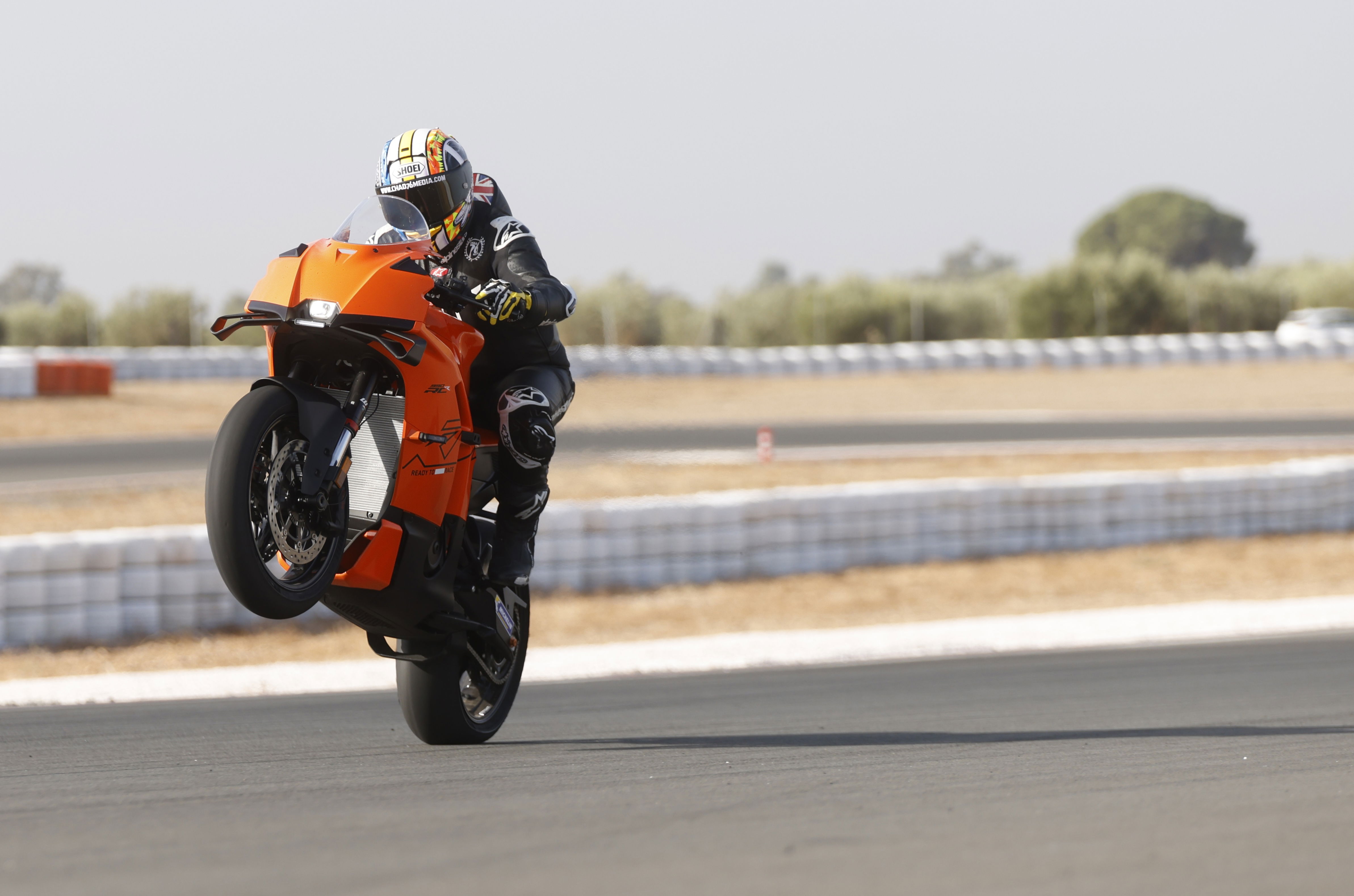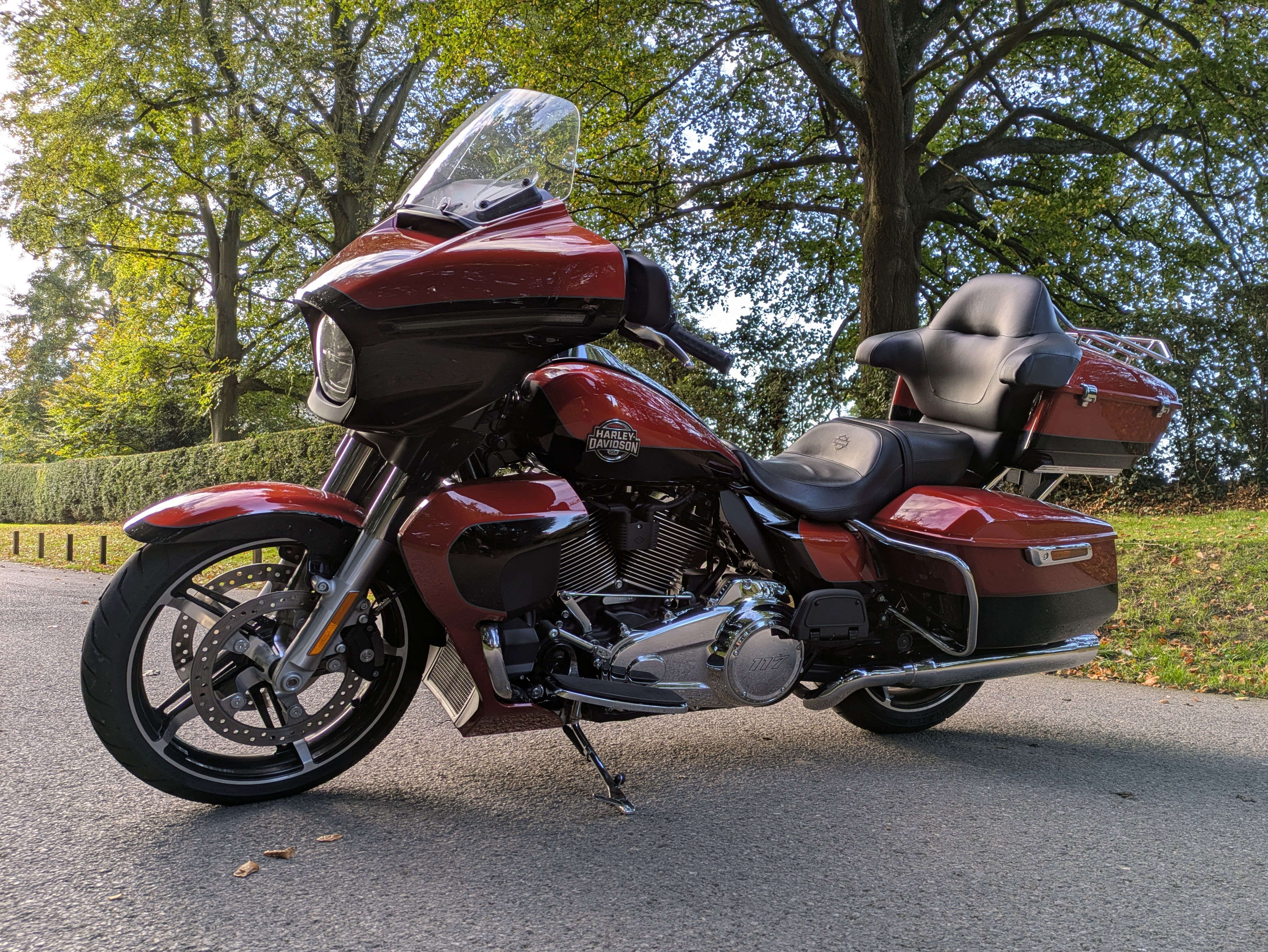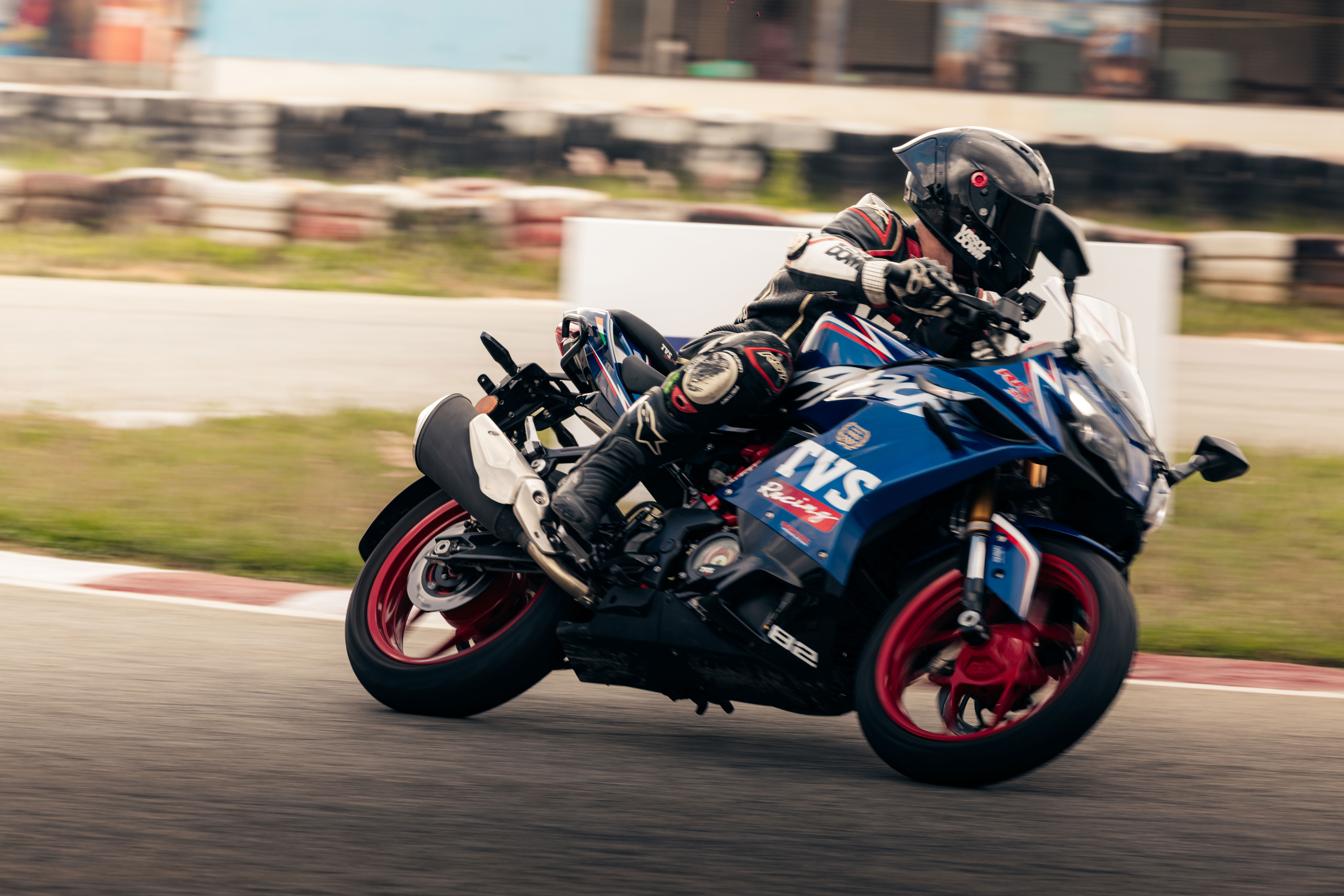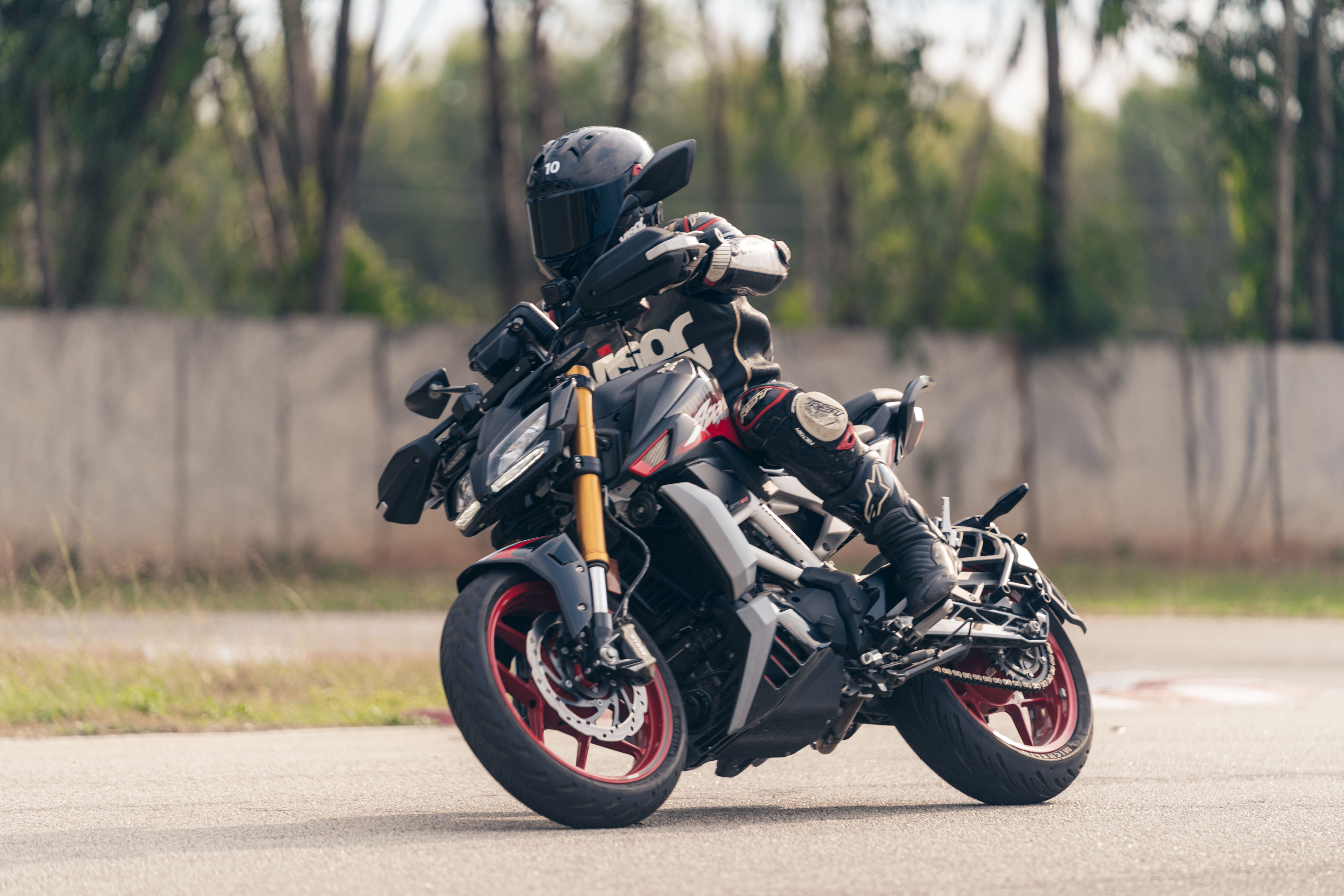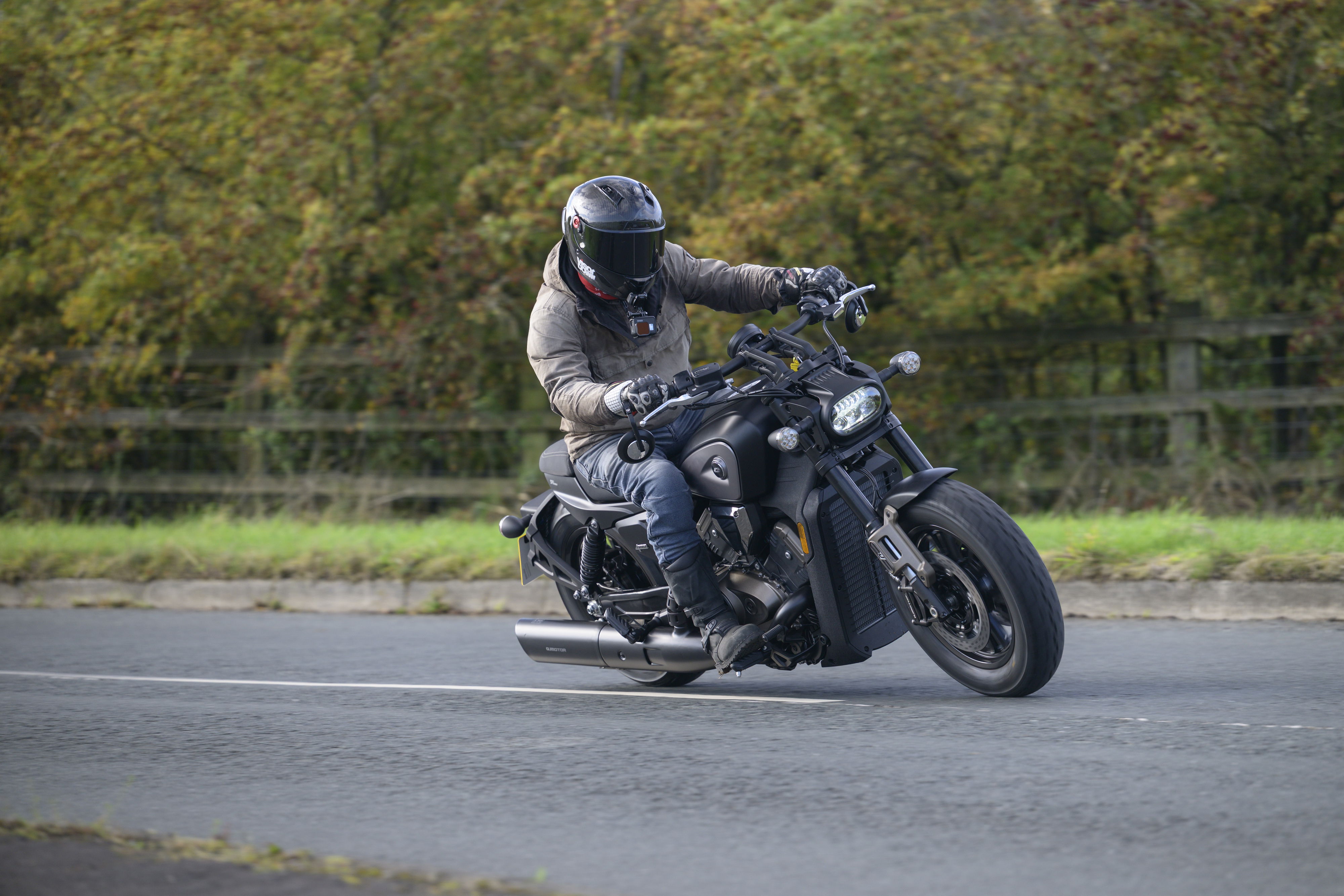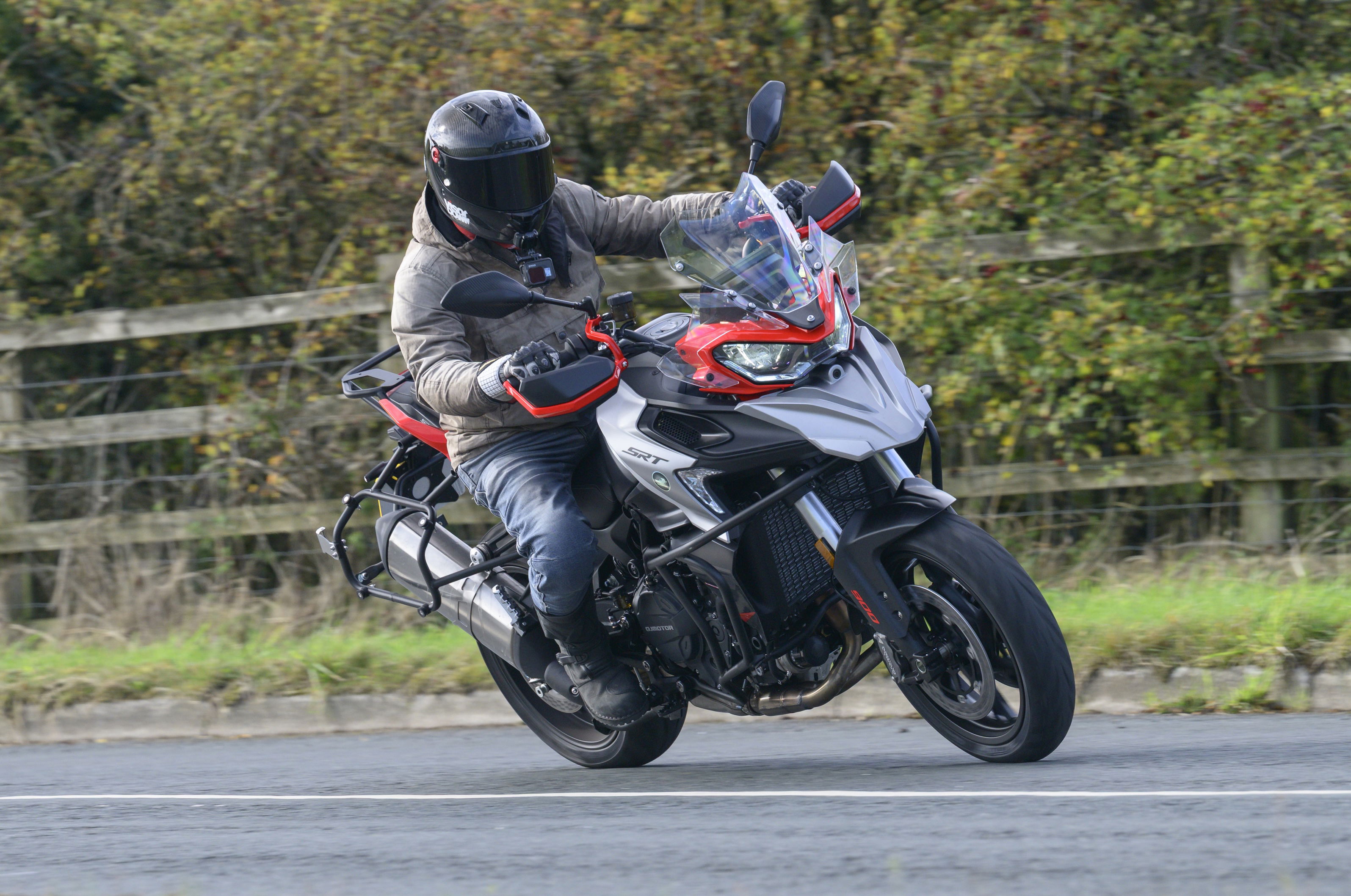2012 KTM 200 Duke first UK ride review
We answer the big questions: what'll it do flat-out, will it wheelie and can an experienced rider live with it day to day

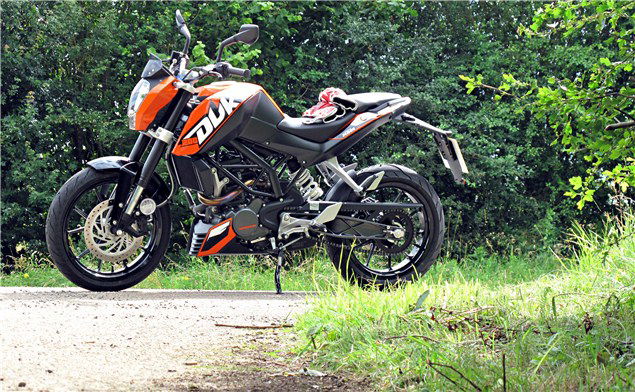
The 'youth' getting into biking today are missing out on two-strokes and no matter how good the latest crop of four-strokes are becoming, the power delivery, noise and smokeyness of my TZR125 personified my late teens perfectly: I'd spend hours making a racket and burning two-stroke down countless country lanes, getting shouted at by walkers, getting it wrong on many occasion and steering clear of hedges. But only just.
There, I just thought I'd get that off my chest. I'm not sure the current crop of small-capacity four-strokes evoke that same sense of mischief and adventure. Does that change with the 200 Duke?
The 200 Duke enters the woefully under-populated sub-300cc market with all the subtlety a bright orange, sharp-edged aggressive looking bike bearing a massive DUKE across the tank can muster. Just look at it, I think it looks awesome.
The 200 Duke is almost identical to KTM's 125 Duke; the same chassis, same everything it's just the engine that's different. The 200cc engine has a 72mm bore compared to the 125's 58mm and a 49mm stroke, just 2mm longer than the 125. With a setup like that, you know it's going to rev and rev.
Just like the 125 Duke, the 200 is made in India, then quality-checked at KTM's production plant in Austria before being unleashed on European dealers. Its quality and finish is every bit 'Western' and there are only a couple of hints of its Indian roots - I'll touch on those later.
From six foot away, it looks every bit the big bike, it has a solid stance - the beefy forks, angled tank and intricate swingarm distract you from the tiny motor hidden within.
That changes slightly when you sit on it. It's got that flick-between-your-legs feel of my RS250 and with both feet firmly on the floor I've got plenty of control of its 135kg wet weight.
The view ahead is very KTM, again you'd think you were on a 690 Duke, the switchgear is almost identical, the bars and top yoke are KTM branded and the clocks glow - predictably - orange on start-up.
At just under 6ft, the 200 Duke suits my frame well. You feel like you're dominating a small bike but, importantly, you don't feel cramped. The angled tank adds to the feeling of being in control, my thighs slot under the tanks 'wings' meaning I can keep a looser grip on the bars.
On the go, the 200 Duke doesn't struggle to march through the gears, it has plenty of drive low-down, especially considering its size, but it really likes to rev, peaking at 10,500rpm. It feels like you've got a box of 10 gears all with a very similar ratio. Pulling out of a T-junction and getting up to the NSL, you feed in gear after gear without noticing a great deal of change in the engine note but it isn't shy about racking up the speed.
Now for the important stuff: the 200 Duke bounces off the limiter in 6th at an indicated 85mph (but you'll need to have your chin on the tank and bum on the pillion seat).
An 85mph (indicated) top-end is respectable but 1st gear tops out at 28mph, so 2nd to 5th cover 30mph to 70mph. Perhaps I'm too used to litre-class sportsbikes that have a good 40mph between gears, but the ratios on the 200 Duke feel as tightly packed as Dawn French's corset.
Final drive is 14:43 and I reckon 15:43 would make a decent difference. Let's be honest, you're going to spend most of your time on the 200 Duke trying to get north of 60mph - especially if your commute involves dual carriageways and at 70mph in top, I start to feel sorry for the hard-working single piston and at 85mph I would have forgiven it had it made a bid for freedom. Running a slightly taller gearing might mean you can get over 90mph but more importantly it means you can carry 70mph without feeling like you're maxing-out the motor.
Now, I have to admit I've never heard of MRF, but these are the Indian-spec tyres that come on the 200 Duke. Even the man from KTM raised his eyebrows when he mentioned them. I took it easy at first, but they didn't give any bad feedback even when giving them 17-year-old style enthusiastic abuse.
The MRFs grip well, but they're weird in two ways: when they break traction they don't want to come back and the profile is suicidal. I mucked about pulling a few skids and backing it in and when the rear tyre breaks away, it feels like you're on ice. A decent tyre would generate a bit of heat, grip a bit more and then come back into line - not the MRFs. The profile is fine until the edge where they drop off a cliff. If you can get the chicken strips off your MRF tyres, I applaud you. I sat looking at the front tyre and worked out that in order to scrub the last chicken strips off, you'd have to be upside down.
I didn't get to ride the bike in the wet but I suspect that's where the MRF tyres will give up. Cheap tyres usually do. If you want to become a really good rider, stick with them and fit them again and again, then when you move up to a bigger bike and fit decent tyres no-one will be able to keep up. That I promise.
I'm not slating the tyres but they're definitely an area where you feel KTM have skimped on an otherwise quality product. How much would it cost to fit a decent set of grippy tyres? Not a lot but this time the accountants at KTM won.
The 200 Duke is a lot of fun on country roads. There's a lot going on between 40 and 70mph to keep you interested; lots of revs, lots of gear changes and lots of corner speed. The tighter and twistier the road, the more it feels at home. It's one of those rare bikes that everyone can get stuck into and if you're used to big bhp, you'll love going back to the days where carrying corner speed and looking a mile ahead to plot your next overtakes were crucial weapons in making progress. If you were out with a group of mates all on 200 Dukes, you'd quickly see who's really capable of riding and who's become lazy - you can't rely on an excess of power to make up lost ground.
There's nothing intimidating about the power delivery and the single-cylinder Duke doesn't carry over the lumpy on/off delivery of a larger capacity single.
Although the suspension features WP branding on the forks and that familiar white spring in the rear, it's a fairly budget setup. The bolts holding on the rear shock look like they should be holding together a steel joist. It looks good though that's probably high up the list for any would-be owner.
You'll struggle to tie the suspension in knots at the speeds you can carry on the standard tyres. Fit a set of ultra-sticky race-based tyres and you might start to find the suspension lacking, but in standard trim, it's supple and subtle and doesn't jar over bumps or rebound like a pogo-stick when you come off the brakes.
Talking of brakes, we don't get the Brembos we saw on the concept bikes, but we get ByBre instead. What's that? Well it's Brembo's brand for emerging markets. Lap-record inducing they aren't but they're plenty good enough and backed up front and rear with braided brake lines too. A well-placed Brembo sticker on the front caliper and no-one will be any the wiser..
Over my day of thrashing around country lanes, A-roads, town centres and dual carriageways, the 200 Duke's clocks told me we'd managed 7.1L/100miles, which with its 10.5 litre tank means I'd have got around 150 miles to the tank. It was being thrashed. If you rode it with half an eye on fuel economy, I have no doubt you'd get closer to 200 miles from the tank.
In town the 200 Duke is a doddle: mega steering lock, low weight, light clutch and throttle - what more do you need? You can U-turn it in a single lane and that lack of weight makes it easy to worm your way through impossibly small gaps with pin-point precision.
Component wise, I can think of six things I really like and four I don't: I don't like the cheap hard grips, the rearsets look like they're designed for a cement mixer. The tyres seem a cost-saving too far, finally there's no underseat storage.
I like the swing-arm - it looks factory, the braided brake lines are a nice touch, the clocks are clear and offer great functions including fuel economy, average speed, distance to the next service. The brakes might offer a designer label but they're strong without being intimidating and I love the click-down sidestand which pops into place and stays there when you're two-thirds of the way down the stroke. Finally I like the ultralight-action throttle. KTMs have a throttle that feels like you need to arm-wrestle it open and then it's always eager to snap shut. The 200 Duke's is light, but remains precise.
If I bought one, I'd change a few things. Firstly, the grips - they have the feel of the ones you get on the Manx TT superbikes games on the ferry; rock hard and built to last. A set of Renthal soft grips would make a difference. I'd change the tyres, it's a shame Michelin's Pilot Road 3 aren't available in sizes to fit the 200 Duke but Metzeler's Z8s are and I'd rate these over the standard MRFs. The brake lever looks like something off a Halfords-own BMX, I'd want a bit of adjustability in the span, perhaps something from ASV. As already mentioned, I'd play around with the gearing. Perhaps one tooth bigger on the front sprocket, or two smaller on the rear sprocket and to help that taller gearing - although the stock exhaust is very cute - I'd ditch it for something that does that diddy-single cylinder justice.
The 200 Duke might be small in capacity but it's big on fun. Although it's not quite the manic two-stroke I had when I was younger, it's a serious package that's perfect for novices to learn their trade on. If I was commuting in the city, it would fit the bill perfectly, but experienced riders would find it lacking in grunt on the open road.
These small capacity bikes seem quite expensive. A Honda CBR125 is £3,400, a Yamaha YZF-R125 is £4,300.
At £3,995 the 200 Duke is just £200 more than the 125 Duke and considering it's got 60% more displacement and at least 60% more thrills, I'd say it's a bargain.
��
